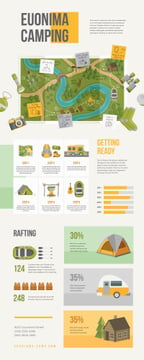deer camp checklist Options
deer camp checklist Options
Blog Article
Security Factors To Consider for Household Camping Tents
Safe and enjoyable camping journeys are possible for the entire household when everyone complies with basic safety and security guidelines. Instruct children to respect wild animals and natural things, always maintain a first-aid package with lots of melt cream accessible, and be prepared for unanticipated scenarios by researching the camping area, weather patterns, and geographical functions.
What is the best one person tent?
Pick the Right Outdoor Tents
Parents who camp know that the appropriate camping tent can make or break an outdoor camping journey. The camping tent you choose need to be durable adequate to endure the harsh therapy that children and pets can deliver. It needs to also be very easy to set up, with attributes like color-coded poles and quick-clip systems.
You ought to additionally consider the dimension and capability of the outdoor tents you wish to get. Try to find a flooring area and top height that can fit the number of individuals in your family members, plus additional room to lower crowding or claustrophobia.
When selecting a campground, survey the location for dangers, such as animal burrows, toxic plants and rough drop-offs. It's additionally an excellent concept to choose a site that uses some form of safety and security attributes, such as border fencing and nightly campground patrols.
Tent Configuration
When establishing camp, locate a level area that is big enough to pleasantly fit your camping tent and any other elements you're preparing for, such as a fire pit. Eliminate any type of particles like sticks or rocks and look out for prospective hazards, such as sloping pitches that can cause you to roll around during the evening and rainfall pools in concave areas.
If it's gusty, place your camping tent so the side with the toughest pole framework faces the wind to decrease the opportunity of it blowing with and triggering injury or damages. Preferably, select a website that is likewise protected by natural obstacles to lessen wind and rainfall threats. You may also want to lay down a tarp a little smaller than your tent floor to keep it dry.
Camping tent Storage
Numerous tents are made with vents and flaps that motivate air circulation. Nevertheless, you need to always maintain flammable items like apparel and sleeping bags far from these openings to prevent fire hazards. Ventilation is also vital to reduce smoke and carbon monoxide gas accumulation, which are serious wellness risks.
Never rest directly on the ground and instruct kids to remain clear of it. This prevents tripping and falling injuries, in addition to insect attacks.
Teach children to constantly check for dangers before entering their camping tents, such as loosened rocks or tree arm or legs that could fall throughout a storm. It's also a good concept to reach the camping area before nightfall to make setting up camp easier and safer. This likewise provides you a possibility to spot any possible issues, like serpents or dangerous plants.
Outdoor tents Climate
There are couple of things extra satisfying than relaxing a campfire roasting s'mores under a star-filled sky. Yet prior to you pitch your tent, make sure your family members has the suitable resting equipment and understands how to appropriately utilize a campfire.
Outdoors tents can additionally be influenced by weather conditions, such as rain and wind. Wind can transform the stress and anxiety on the outdoor tents, loosening ratchet assemblies and pulling stakes out of the ground. Rainfall can trigger outdoors tents to leak.
Search for camping tents that use great ventilation and minimize condensation (wetness pretty tent that naturally develops from your body's breath). Think about bringing a tarp in case of rainfall. And constantly leave your camping tent if there are lightning strikes nearby.
Camping tent Safety and security
Camping tents that don't follow fire and life safety and security demands are a fire risk. Moreover, saving flammable materials like wood, gas cylinders, and gas within the tent can trigger them to get too hot or perhaps explode. To lower these risks, they ought to be saved outside the camping tent sheltered by a durable tarp.
Fire threats also emerge from incorrect usage and storage of ovens. Stoves that aren't properly vented can launch carbon monoxide, a fatal poisonous gas.
Camping tent tethers and risks can produce trip risks in walkways and paths. To lower these risks, event organizers should think about making use of visible weights on tethers, setting up secure cleats, or using safety cones around stake lines. In addition, they need to ensure that leaves are not obstructed by furnishings, outdoor tents walls, or other frameworks.
What can I put on my tent floor?
